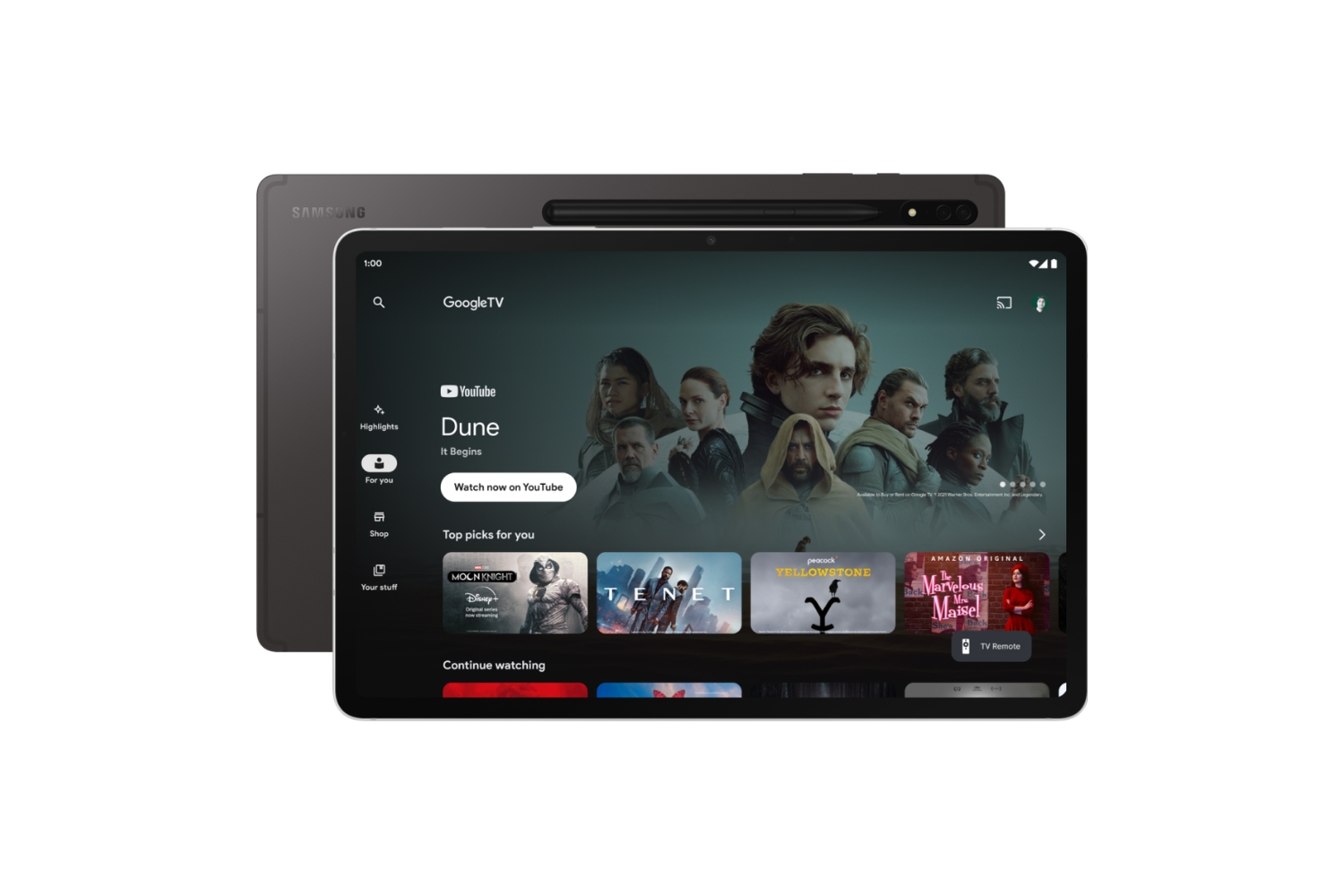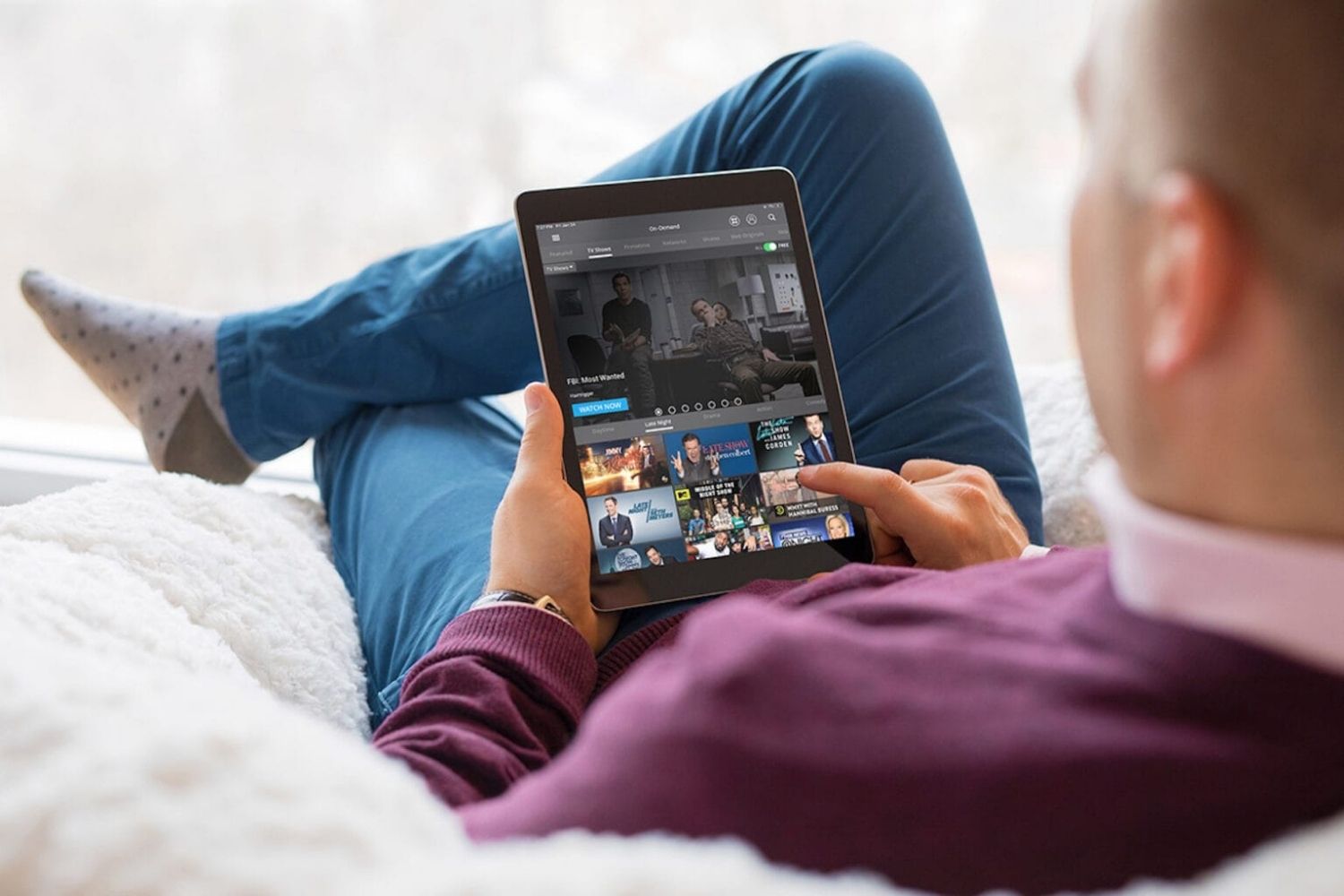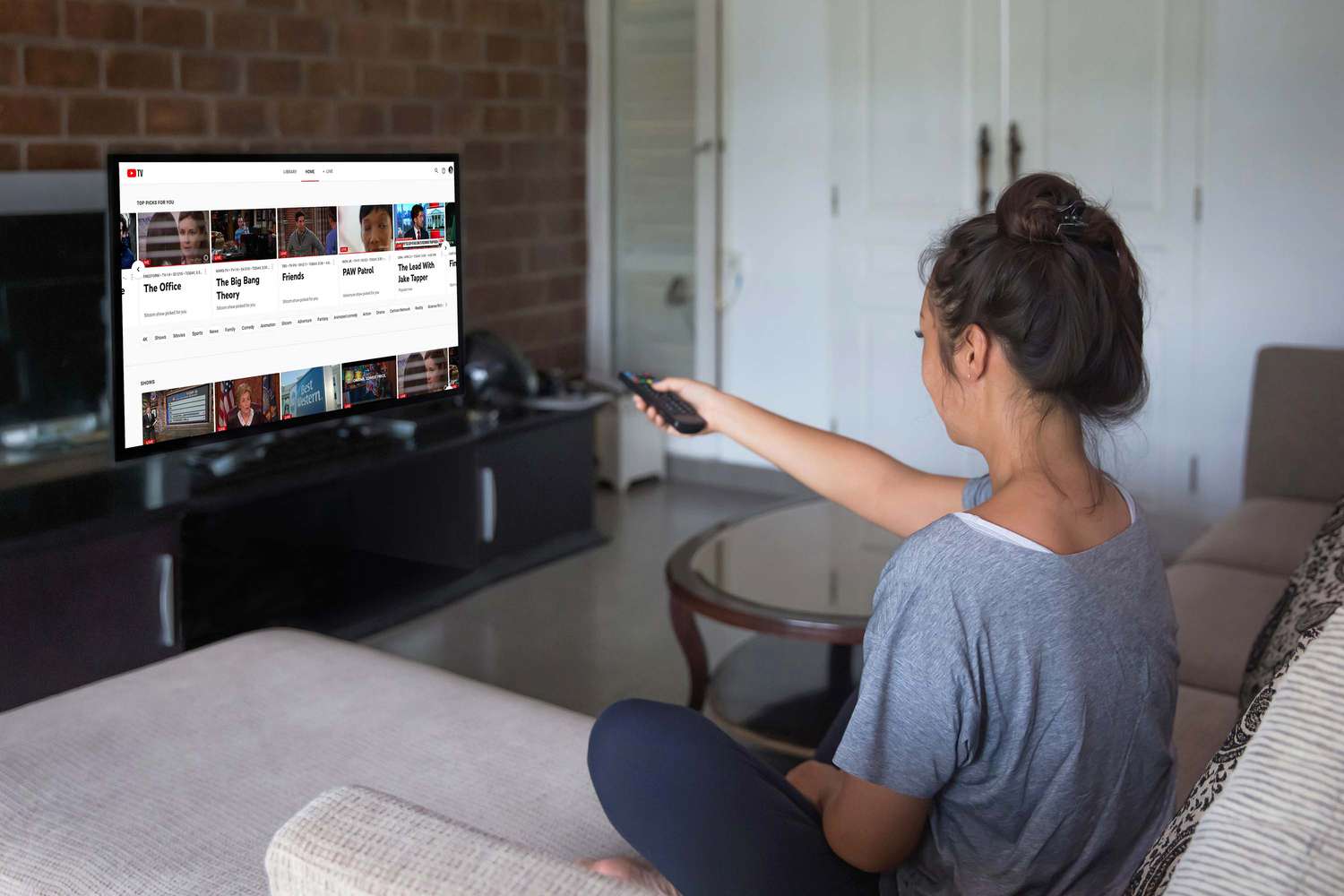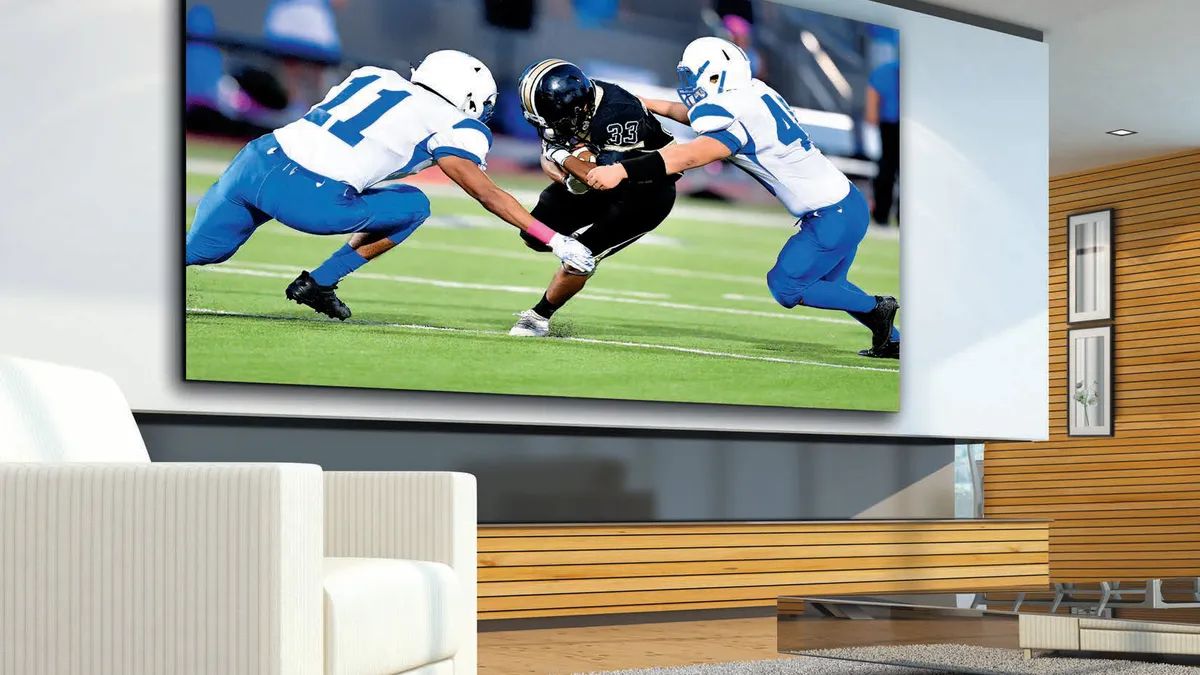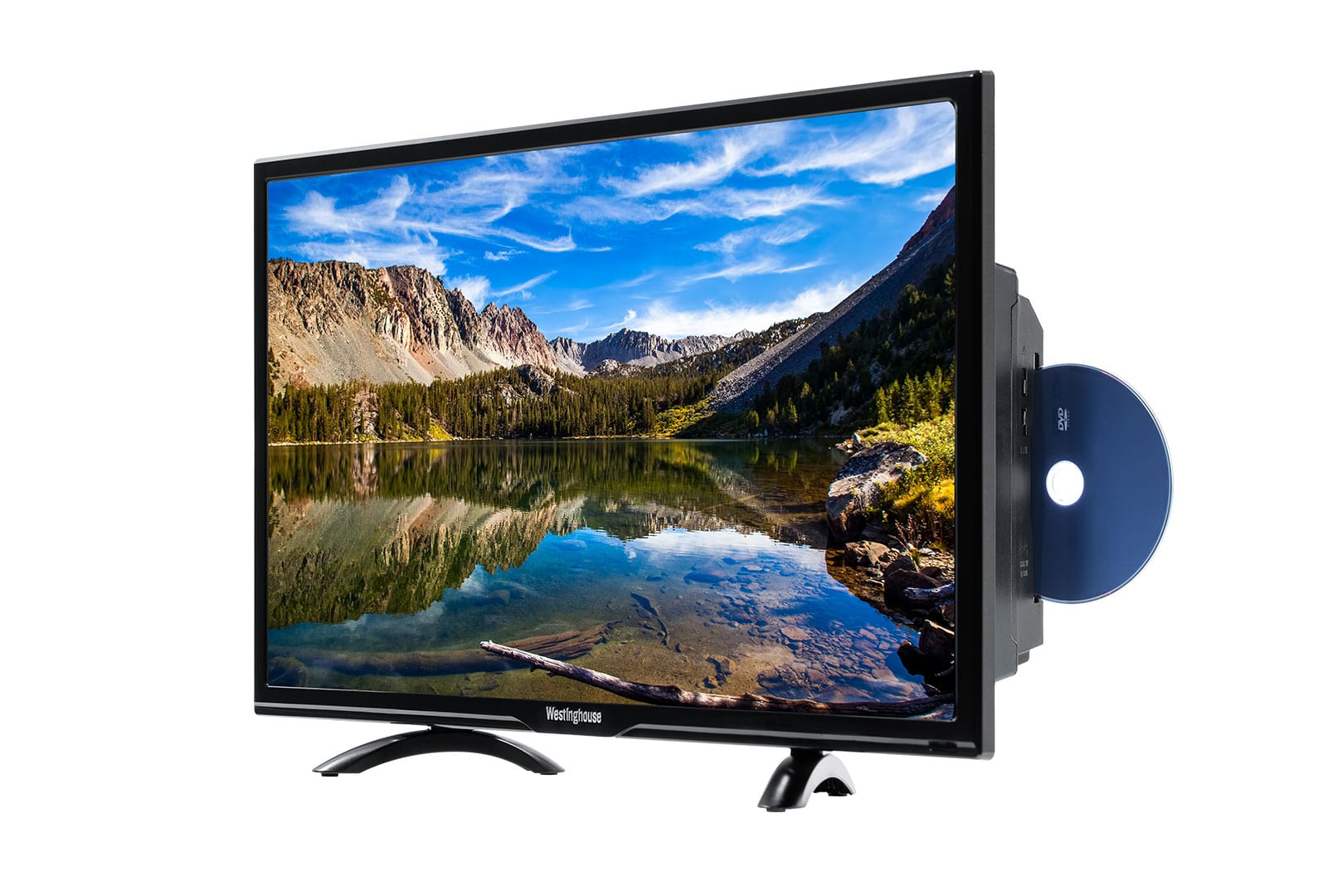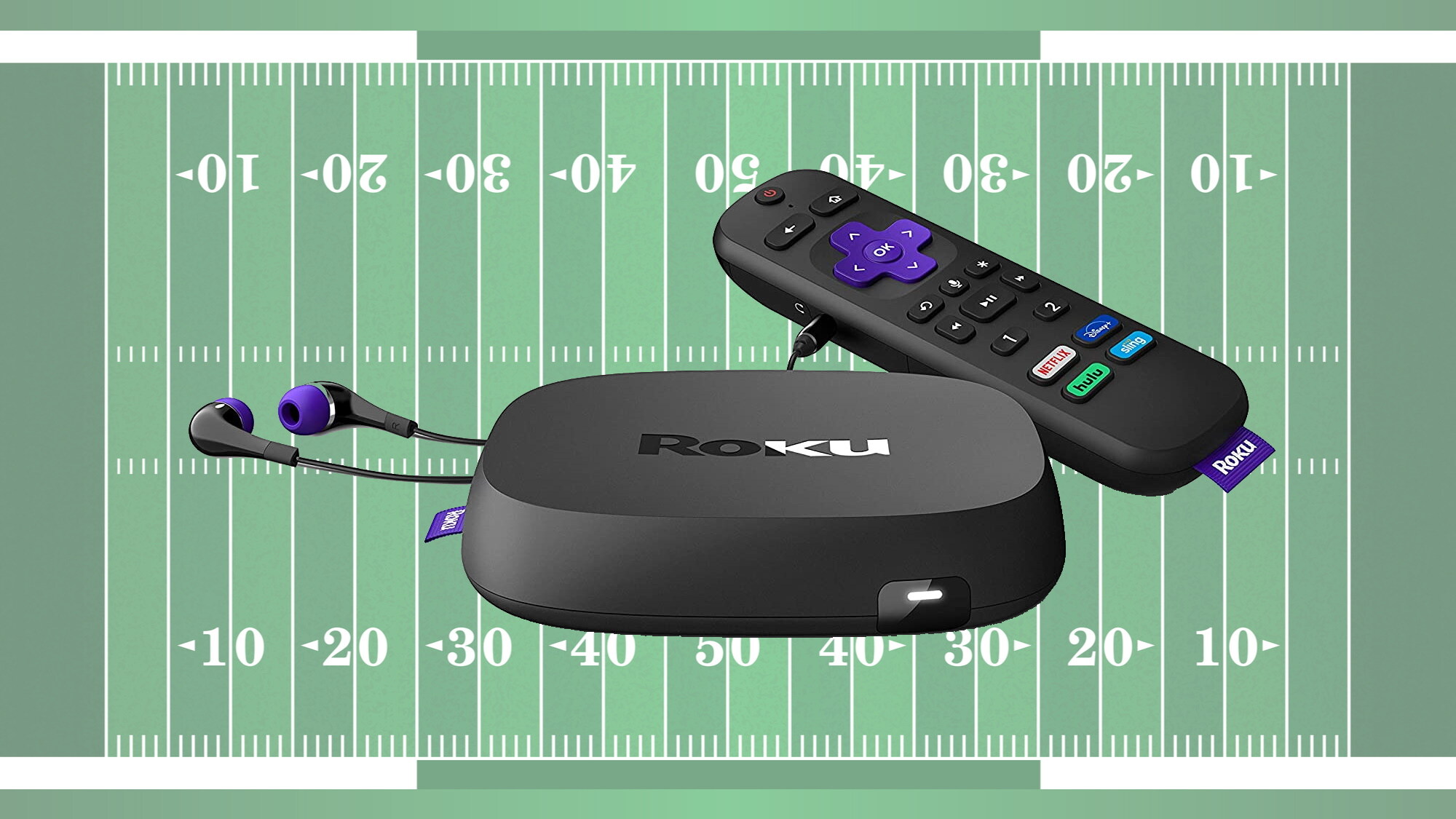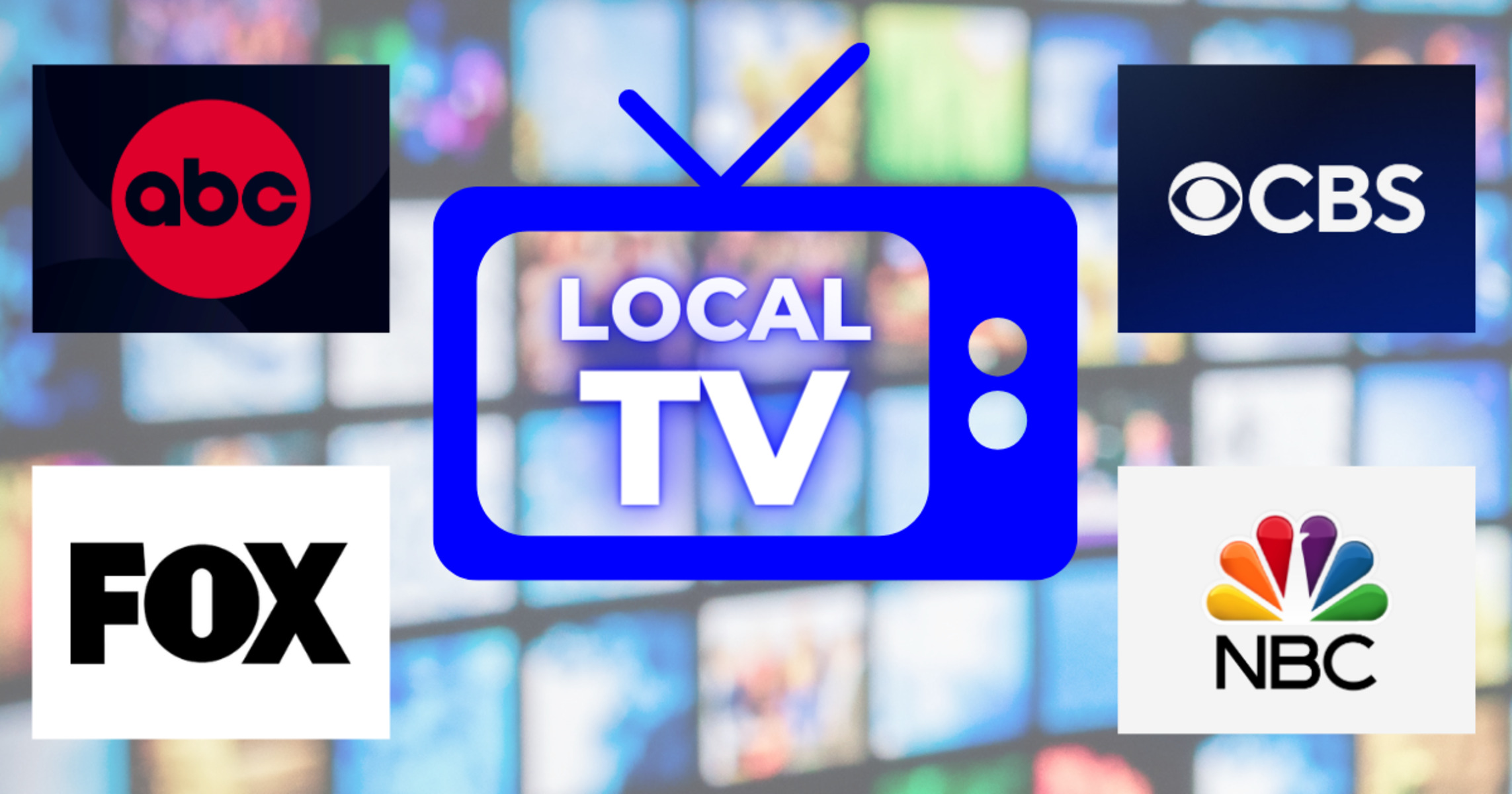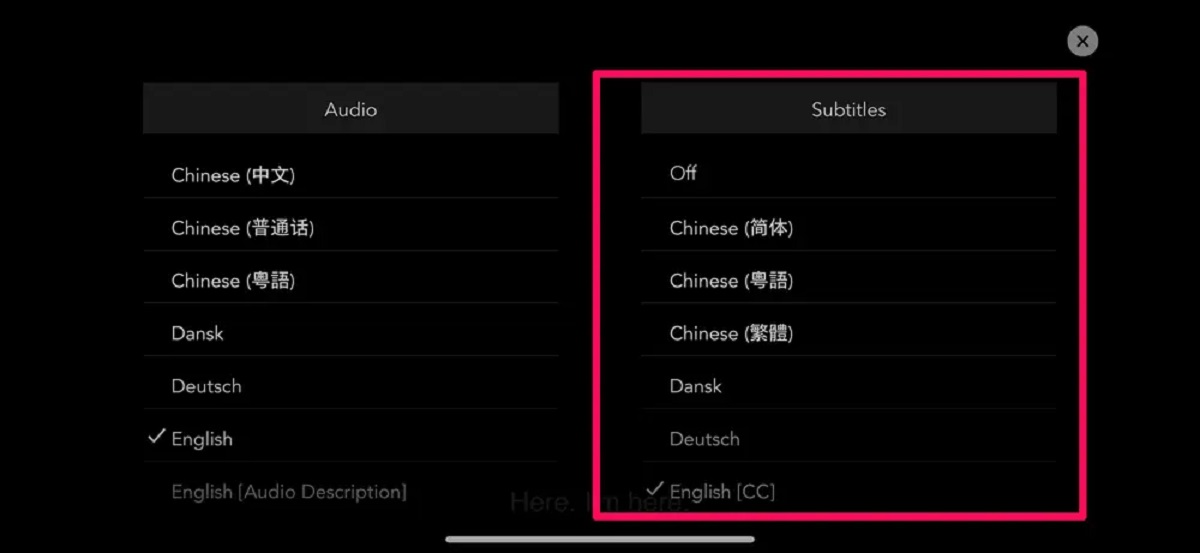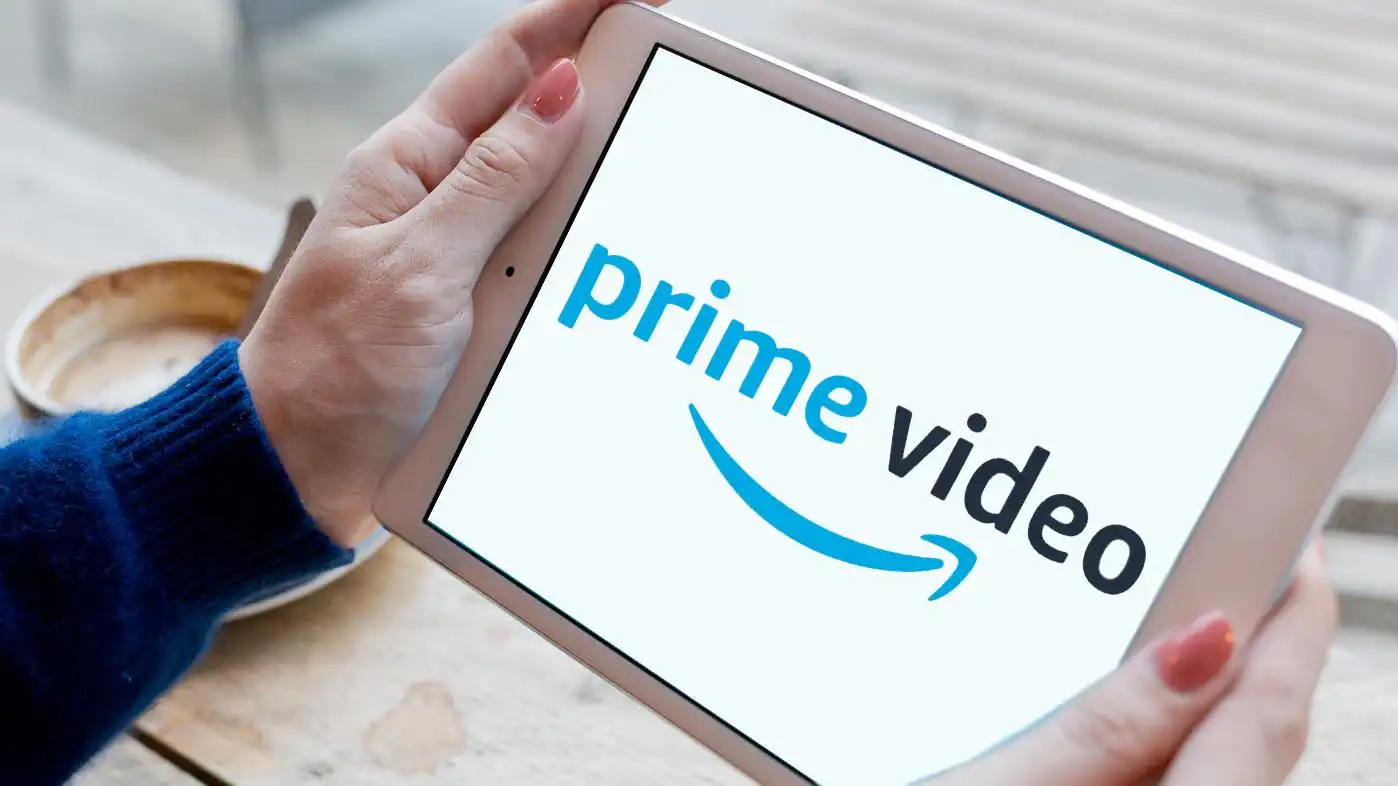Introduction
These days, tablets have become powerful multimedia devices that can do much more than just browsing the internet or playing games. They also offer a convenient way to watch TV shows and movies on the go. Whether you’re traveling, commuting, or simply relaxing at home, having the ability to watch TV on your tablet can be a game-changer.
With numerous options available, it’s important to understand the different ways to watch TV on your tablet. This article will guide you through various methods, from using TV provider apps to streaming services and live TV apps. We’ll also explore unconventional methods such as using an antenna and tuner, screen mirroring, and TV Everywhere apps.
While tablets offer the advantage of portability, there are some factors to consider when choosing your preferred method of watching TV on your tablet. Screen size and quality, internet connectivity, data usage, and subscription costs are important considerations that will contribute to your overall viewing experience.
By the end of this article, you’ll have a clearer understanding of the options available to you and be able to make an informed decision on how to watch TV on your tablet. So, let’s dive in and explore the exciting world of watching TV on your tablet.
Different Ways to Watch TV on Your Tablet
When it comes to watching TV on your tablet, you have a multitude of options to choose from. From TV provider apps to streaming services and even live TV apps, there’s something for everyone. Let’s explore some of the different ways you can enjoy your favorite TV shows and movies on your tablet.
1. TV Provider Apps: Many cable and satellite TV providers offer dedicated apps that allow their subscribers to watch their favorite channels and on-demand content on their tablets. These apps often require you to sign in with your cable or satellite TV credentials to access the content.
2. Streaming Services: Streaming services like Netflix, Hulu, Amazon Prime Video, and Disney+ have revolutionized the way we consume TV shows and movies. These services offer a vast library of content that can be accessed on your tablet with a subscription. Some streaming services even allow you to download content for offline viewing, perfect for long flights or commutes without internet access.
3. Live TV Apps: If you enjoy watching live TV channels, there are apps available that provide access to a variety of channels. These apps often require a subscription and offer a selection of local, national, and international channels that can be streamed directly on your tablet.
4. Antenna and Tuner: If you want to watch over-the-air broadcast channels on your tablet, you can use an antenna and a tuner accessory. This setup allows you to pick up local channels and stream them directly to your tablet via a compatible app.
5. Screen Mirroring: Another option to watch TV on your tablet is by using screen mirroring. If your TV has this feature, you can mirror its screen directly to your tablet and enjoy your favorite shows and movies on a bigger screen. This method requires an active internet connection and compatible devices.
6. TV Everywhere Apps: Many TV networks offer their own dedicated apps that allow you to stream their content on your tablet. These apps often require you to sign in with your cable or satellite TV credentials to access the full range of content from that particular network.
These are just a few of the different ways you can watch TV on your tablet. The method you choose will ultimately depend on your personal preferences, budget, and the content you want to access. Now that you have an overview of the options available, let’s dive deeper into the factors you should consider when watching TV on your tablet.
TV Provider Apps
TV provider apps offer a convenient way for cable and satellite TV subscribers to watch their favorite channels and on-demand content on their tablets. These apps, provided by the TV service provider, often require you to sign in with your cable or satellite TV credentials to access the content.
With TV provider apps, you can enjoy a wide range of channels, including popular networks and local stations. You can watch live TV, catch up on your favorite shows, and even access on-demand content. The interface of these apps is designed to be user-friendly, allowing you to easily browse and search for the content you want to watch.
One of the advantages of using TV provider apps is that they give you access to content that is specific to your TV subscription. This means you can watch channels that are included in your cable or satellite TV package on your tablet, without any additional costs.
TV provider apps also often come with additional features, such as the ability to set reminders for upcoming shows, access to TV guides, and the option to record shows for later viewing. Some apps even allow you to stream content to your tablet and watch it offline, which is ideal for those times when you don’t have an internet connection.
It’s important to note that not all TV provider apps are available on all tablets. Before relying on a specific app, make sure to check if it is compatible with your tablet and operating system.
Overall, TV provider apps offer a convenient solution for cable and satellite TV subscribers who want to watch their favorite shows and channels on their tablets. With easy access to live TV, on-demand content, and additional features, these apps provide a seamless TV viewing experience on the go.
Streaming Services
Streaming services have revolutionized the way we consume TV shows and movies, offering a vast library of content that can be accessed on various devices, including tablets. Popular streaming services such as Netflix, Hulu, Amazon Prime Video, and Disney+ provide a wide range of TV shows, movies, documentaries, and original content that can be streamed directly on your tablet.
With a subscription to a streaming service, you can enjoy unlimited access to a diverse selection of content. These services offer a user-friendly interface that allows you to easily browse through different genres, search for specific titles, and create personalized watchlists.
One of the key advantages of streaming services is the flexibility they provide. You can watch your favorite shows and movies on-demand, allowing you to choose when and where you want to watch. Additionally, many streaming services offer the option to download content for offline viewing. This is particularly useful when you’re traveling or in areas with a limited internet connection.
Streaming services also offer a wide range of TV shows and movies from various networks and production studios. This means you can access a diverse array of content, including popular series, classic movies, and exclusive originals that are only available on the platform.
It’s worth noting that streaming services require a subscription, which typically comes with a monthly or yearly fee. However, the cost is often much lower than traditional cable or satellite TV subscriptions, making streaming services an attractive option for many users.
Moreover, streaming services often allow multiple devices to be connected to a single account, which means you can access the service on different tablets or share your account with family members.
Overall, streaming services offer a convenient and affordable way to watch TV shows and movies on your tablet. With a wide range of content, flexible viewing options, and affordable subscription plans, these services have become immensely popular among tablet users worldwide.
Live TV Apps
If you enjoy watching live TV channels on your tablet, live TV apps are a great option. These apps provide access to a variety of channels, allowing you to watch your favorite shows, news, sports, and more in real-time.
Live TV apps offer a diverse selection of channels, including local, national, and international networks. You can find apps that cater to specific regions or apps that offer a global selection of channels. Some apps even provide additional features like channel customization, allowing you to create a personalized lineup of your favorite channels.
To access live TV through these apps, you typically need an active internet connection. Most apps require you to create an account and may offer different subscription plans to access certain channels or features. Some apps may also include advertisements during live TV streaming.
With live TV apps, you can enjoy the excitement of real-time broadcasts, such as sports events or breaking news. These apps often come with interactive program guides, making it easy to navigate through channels and discover new content. You can also set reminders for upcoming shows or set recordings to watch them later.
While live TV apps offer a convenient way to watch TV on your tablet, there are a few factors to consider. Firstly, the availability and selection of channels may vary depending on your location and the app you choose. Secondly, the app’s performance and streaming quality can be affected by your internet connection. Therefore, it’s important to have a stable and reliable internet connection for the best viewing experience.
Lastly, it’s worth noting that some live TV apps may require you to have a cable or satellite TV subscription to access certain channels or content. However, there are also free live TV apps available that offer a selection of channels without the need for a cable subscription.
Overall, live TV apps provide a convenient way to watch your favorite TV channels in real-time on your tablet. Whether you’re catching up on the latest news, cheering for your favorite team, or enjoying your favorite shows, these apps give you access to a wide range of live TV content at your fingertips.
Antenna and Tuner
If you want to watch over-the-air broadcast channels on your tablet, using an antenna and tuner can provide you with access to local channels for free. With this setup, you can enjoy live TV broadcasts directly on your tablet.
To utilize an antenna and tuner, you’ll need a tablet that supports USB or HDMI connectivity and a compatible TV tuner accessory. The TV tuner plugs into your tablet’s USB or HDMI port and allows you to connect an antenna to receive over-the-air signals.
Once connected, you can use a compatible app to access and stream the live TV channels picked up by the antenna. These apps often offer features such as a program guide, channel scanning, and the ability to pause, rewind, and record live TV.
The advantage of using an antenna and tuner to watch TV on your tablet is that it allows you to access local channels without the need for a cable or satellite TV subscription. This means you can watch your favorite shows, news, and sports events from local stations, all for free.
However, it’s important to note that the number of channels you can receive with an antenna will depend on your location and the range of the antenna. Additionally, the signal strength and reception quality might be affected by environmental factors such as buildings or geographical obstacles.
Another consideration is the compatibility of the TV tuner accessory with your tablet’s operating system and the availability of compatible apps. Before purchasing a TV tuner, ensure that it is compatible with your specific tablet and has supported apps for streaming live TV.
Using an antenna and tuner to watch TV on your tablet can be a cost-effective solution for accessing local channels. It provides the flexibility of streaming live TV on your tablet without the need for a cable or satellite subscription.
Overall, if you’re looking for a way to watch over-the-air channels on your tablet, using an antenna and tuner is a viable option. With the right equipment and a compatible app, you can enjoy live TV broadcasts from local stations and stay updated with the latest news and entertainment on your tablet.
Screen Mirroring
Screen mirroring is another method to watch TV on your tablet by mirroring the screen of your television. This allows you to stream and watch your favorite shows and movies from your TV directly on your tablet.
To utilize screen mirroring, both your television and tablet need to support this feature. Most smart TVs and tablets offer screen mirroring capabilities, which use technologies like Miracast, AirPlay, or Chromecast to establish a wireless connection between the two devices.
Once the screen mirroring connection is established, whatever is displayed on your television screen will be mirrored on your tablet. This means you can use your tablet as a remote control and enjoy the same content on a smaller, portable screen.
Screen mirroring allows you to access a wide range of content, including live TV, streaming apps, and even media files stored on your television or connected devices. It gives you the freedom to move around, making it ideal for multitasking or watching content in different rooms without the need for additional subscriptions or devices.
However, it’s important to note that screen mirroring requires a stable Wi-Fi network connection. Both your tablet and television need to be connected to the same Wi-Fi network for screen mirroring to work seamlessly. Additionally, the quality of the mirroring experience may be affected by the performance of your Wi-Fi network and the distance between the devices.
Furthermore, some streaming apps or content may have restrictions or DRM (Digital Rights Management) protocols that prevent them from being mirrored. In such cases, you may need to explore other methods, like using dedicated apps or streaming devices, to access the desired content on your tablet.
Overall, screen mirroring provides a convenient way to watch TV on your tablet, especially if you prefer the familiarity of your television’s interface or want to enjoy content from various sources on a portable screen. By mirroring the screen, you can access a wide range of content and have greater flexibility in how and where you watch your favorite shows and movies.
TV Everywhere Apps
TV Everywhere apps are dedicated applications offered by TV networks that allow you to stream their content on your tablet. These apps often require you to sign in with your cable or satellite TV credentials to access the full range of content from that particular network.
TV Everywhere apps provide access to a variety of TV shows, movies, and live streams from specific networks or channels. This means you can watch content from popular networks like HBO, ESPN, FOX, and more, all from the convenience of your tablet.
With TV Everywhere apps, you can catch up on missed episodes of your favorite shows, stream live events, and enjoy on-demand content. These apps often provide a user-friendly interface with customizable features such as personalized watchlists and recommendations based on your viewing history.
One of the advantages of TV Everywhere apps is that they allow you to access content that is specific to your cable or satellite TV subscription. You can watch popular TV shows, exclusive series, and live sports events from the networks you’re already subscribed to, without any additional costs.
Moreover, TV Everywhere apps often provide additional features such as closed captions, multi-language support, and parental controls, allowing you to customize your viewing experience based on your preferences and requirements.
It’s worth noting that availability and features may vary between different TV Everywhere apps, and not all networks offer this service. Before relying on a specific app, make sure to check if the network you’re interested in has its dedicated TV Everywhere app and if it is compatible with your tablet.
Overall, TV Everywhere apps are a convenient option for cable or satellite TV subscribers who want to access network-specific content on their tablets. With these apps, you can stay connected to your favorite shows and networks, enjoy live TV, and never miss out on the latest episodes or sports events while on the go.
Factors to Consider When Watching TV on Your Tablet
Watching TV on your tablet offers convenience and flexibility, but there are several factors to consider to ensure a satisfying viewing experience. Here are some key factors to keep in mind:
1. Screen Size and Quality: The screen size and quality of your tablet play a crucial role in your viewing experience. A larger screen can provide a more immersive experience, while a higher resolution and vibrant colors enhance the visuals. Consider your preferences and choose a tablet with a screen size and quality that suits your needs.
2. Internet Connectivity and Data Usage: Streaming TV content on your tablet requires a stable internet connection. Ensure that you have access to a reliable Wi-Fi network or a sufficient mobile data plan. Keep in mind that streaming video can consume a significant amount of data, so it’s important to monitor your data usage and adjust settings accordingly to avoid exceeding your data limit.
3. Subscription Costs: Different methods of watching TV on your tablet come with varying subscription costs. Consider the monthly or annual fees associated with streaming services or any other subscription-based apps you may choose. Compare prices and features to determine the best value for your budget and entertainment preferences.
4. Content Availability: Check the availability of the TV shows, movies, and channels you want to watch on the different platforms or apps. Ensure that the content you enjoy is accessible through the chosen method of watching TV on your tablet. Take note of exclusive content, as some shows or movies may be available only on specific streaming services or TV provider apps.
5. User Interface and App Compatibility: Consider the user interface and ease of navigation offered by the apps or platforms you plan to use. Look for intuitive interfaces, customizable features, and compatible apps for your tablet’s operating system. A user-friendly interface enhances your overall viewing experience and makes it easier to find and enjoy your favorite TV shows and movies.
6. Additional Features and Functionality: Explore the additional features and functionalities offered by different platforms or apps. Look for features such as offline viewing, the ability to create personalized watchlists, parental controls, and compatibility with external devices or accessories. These additional features can enhance your viewing experience and provide added convenience.
7. Customer Reviews and Ratings: Before committing to a particular method of watching TV on your tablet, consider reading customer reviews and ratings. Feedback from other users can provide valuable insights into the performance, reliability, and content selection of various platforms or apps. This can help you make an informed decision and avoid potential disappointments.
By taking these factors into consideration, you can make an informed decision on how to watch TV on your tablet that aligns with your preferences, budget, and desired content. With the right combination of factors, you can enjoy a seamless and enjoyable TV viewing experience on your tablet.
Screen Size and Quality
When it comes to watching TV on your tablet, the screen size and quality are essential factors to consider. The size of your tablet’s screen can greatly impact your viewing experience, as it determines the level of immersion and the amount of detail you can see.
For many users, a larger screen size provides a more immersive experience, especially when watching movies or TV shows with beautiful visuals or intricate details. A larger screen allows you to fully appreciate the colors, textures, and intricacies of the content you’re watching.
However, larger screens might also make your tablet less portable. If you plan to use your tablet primarily on the go, a smaller screen size might be more appropriate for portability and convenience. It’s all about finding a balance between screen size and portability based on your personal preferences and usage scenarios.
In addition to size, the quality of the tablet’s screen is crucial for an enjoyable TV viewing experience. High-resolution displays, such as those with Full HD or even 4K resolution, offer sharper and clearer images, allowing you to see more details and enjoy richer visuals.
Another aspect to consider is the color reproduction and brightness of the screen. A tablet with accurate color reproduction and good brightness levels ensures that the colors in the content you’re watching appear vibrant and true-to-life. It enhances the visual experience and brings the content to life.
It’s worth noting that different tablets employ various display technologies, such as LCD, OLED, or AMOLED. Each technology has its own strengths and weaknesses in terms of color accuracy, contrast ratio, and viewing angles. Researching and comparing these technologies can help you select a tablet with a screen that meets your expectations.
Ultimately, the ideal screen size and quality will depend on your usage preferences, portability requirements, and budget. Consider how you plan to use your tablet for watching TV and determine the right balance between screen size, resolution, color accuracy, and display technology to ensure an enjoyable viewing experience.
Internet Connectivity and Data Usage
When it comes to watching TV on your tablet, internet connectivity is crucial. Most methods of streaming TV content on your tablet require a stable and reliable internet connection. Here are some factors to consider regarding internet connectivity and data usage:
1. Wi-Fi or Mobile Data: The two main options for connecting your tablet to the internet are through Wi-Fi or mobile data. Wi-Fi is commonly used when you’re at home or in areas with public or private Wi-Fi networks available. Mobile data, on the other hand, allows you to access the internet through your cellular network, which is convenient when you’re on the go. Consider the availability and reliability of both options based on your typical usage scenarios.
2. Internet Speed: The speed of your internet connection plays a significant role in streaming TV content smoothly and without buffering. Higher download speeds are generally preferable for a seamless viewing experience. If your internet speed is limited, you may experience interruptions or reduced video quality. Consider checking your internet speed and ensure it meets the minimum recommendations for streaming TV content in high definition or 4K, if applicable.
3. Data Usage: Streaming TV shows and movies can consume a significant amount of data, especially when watching content in high definition. Understand the data usage per hour for the specific streaming services or apps you’re using, as it can vary. If you have a limited data plan or are concerned about exceeding your data cap, it’s important to be mindful of your data usage. Some apps or streaming services also allow you to adjust video quality settings to reduce data consumption.
4. Wi-Fi Network Reliability: When using Wi-Fi, the reliability of your network is essential for uninterrupted streaming. A stable and secure Wi-Fi network ensures a consistent connection, preventing buffering or disruptions during your TV viewing sessions. If you’re experiencing connectivity issues with your home Wi-Fi, consider troubleshooting or upgrading your network equipment to maximize reliability.
5. Wi-Fi Network Security: When connecting to Wi-Fi networks, ensure that you’re using secure and password-protected networks to protect your data and maintain your privacy. Public Wi-Fi networks, while convenient, may not always be secure, so exercise caution when connecting to them to avoid potential security risks.
6. Streaming Device Limitations: Some streaming devices or apps may have specific requirements or limitations when it comes to internet connectivity. For example, certain streaming services may require a minimum internet speed or specific Wi-Fi protocols. Before choosing a specific method or service for watching TV on your tablet, ensure that your internet connection meets the requirements.
By considering these factors, you can ensure a smooth and uninterrupted TV viewing experience on your tablet. Whether you’re using Wi-Fi or mobile data, it’s important to have a reliable and fast internet connection to enjoy your favorite shows and movies without interruptions.
Subscription Costs
When it comes to watching TV on your tablet, subscription costs play a significant role in determining which method or service you choose. Here are some considerations regarding the subscription costs:
1. Streaming Services: Most streaming services require a subscription to access their content library. The cost of subscription varies depending on the service and the subscription plan you choose. Consider the monthly or yearly fees associated with streaming services such as Netflix, Hulu, Amazon Prime Video, Disney+, and others. Take into account your budget and the value you expect to derive from the content libraries offered by each service.
2. Bundled Packages: Some streaming services may offer bundled packages that combine multiple services or provide additional perks. For example, you may find streaming services bundled with music streaming platforms or other entertainment subscriptions. These bundled packages may offer cost savings compared to subscribing to individual services separately.
3. TV Provider Packages: If you already have a cable or satellite TV subscription, check if your TV provider offers app-based access to their content at no additional cost. Many TV providers have their own apps that allow you to watch live TV and on-demand content on your tablet, as long as you have an active subscription. This can provide you with additional options for watching TV on your tablet at no extra financial burden.
4. Free Content: While many streaming services require a subscription, there are also platforms that offer free, ad-supported content. These platforms allow you to watch a selection of TV shows, movies, and other content without having to pay a subscription fee. Advertisements may be included during the content playback.
5. Data Plan Considerations: When considering subscription costs, don’t forget to take into account your data plan if you’re using mobile data to stream TV content on your tablet. Depending on your data plan, streaming TV shows and movies may consume a significant amount of data. If you have a limited data plan, you may need to factor in the potential additional data costs associated with streaming TV content.
6. Trial Periods and Special Offers: Many streaming services offer trial periods or special introductory offers for new subscribers. Take advantage of these trial periods to test out different services and determine which ones align with your preferences. Additionally, keep an eye out for special promotions or discounts that may be available, especially during holiday seasons or other promotional periods.
7. Cancellation Flexibility: Before committing to a subscription, consider factors related to cancellation flexibility. Some services offer monthly subscriptions that can be easily cancelled at any time, while others require annual commitments. Assess your willingness to commit long-term and check if there are any cancellation fees or penalties associated with ending a subscription prematurely.
By carefully considering the subscription costs and weighing them against your budget and entertainment needs, you can choose the method or service that offers the best value for your TV viewing on your tablet.
Conclusion
Watching TV on your tablet opens up a world of entertainment and convenience, allowing you to enjoy your favorite shows, movies, and live events on a portable and versatile device. Throughout this article, we have explored different ways to watch TV on your tablet, including TV provider apps, streaming services, live TV apps, antenna and tuner setups, screen mirroring, and TV Everywhere apps.
When choosing how to watch TV on your tablet, there are several factors to consider. The screen size and quality, internet connectivity, data usage, subscription costs, content availability, user interface, and additional features all contribute to your optimal viewing experience.
Consider the size and quality of the tablet’s screen based on your preferences and portability requirements. Ensure a stable internet connection and be mindful of your data usage when streaming TV content. Compare subscription costs and explore bundled packages and free content options to find the best value for your entertainment needs.
Examine the availability of the content you want to watch on different platforms and consider the user interface and compatibility of the chosen apps with your tablet. Assess additional features and functionalities that enhance your viewing experience, such as offline viewing or parental controls.
By carefully considering these factors, you can make an informed decision regarding how to watch TV on your tablet, ensuring an enjoyable and seamless viewing experience that aligns with your preferences and budget.
So, whether you choose to stream shows through popular services, access live TV channels using dedicated apps, mirror your TV screen, or utilize TV provider apps and antenna setups, your tablet can become a versatile entertainment device that brings your favorite TV shows and movies to your fingertips, wherever you go.







